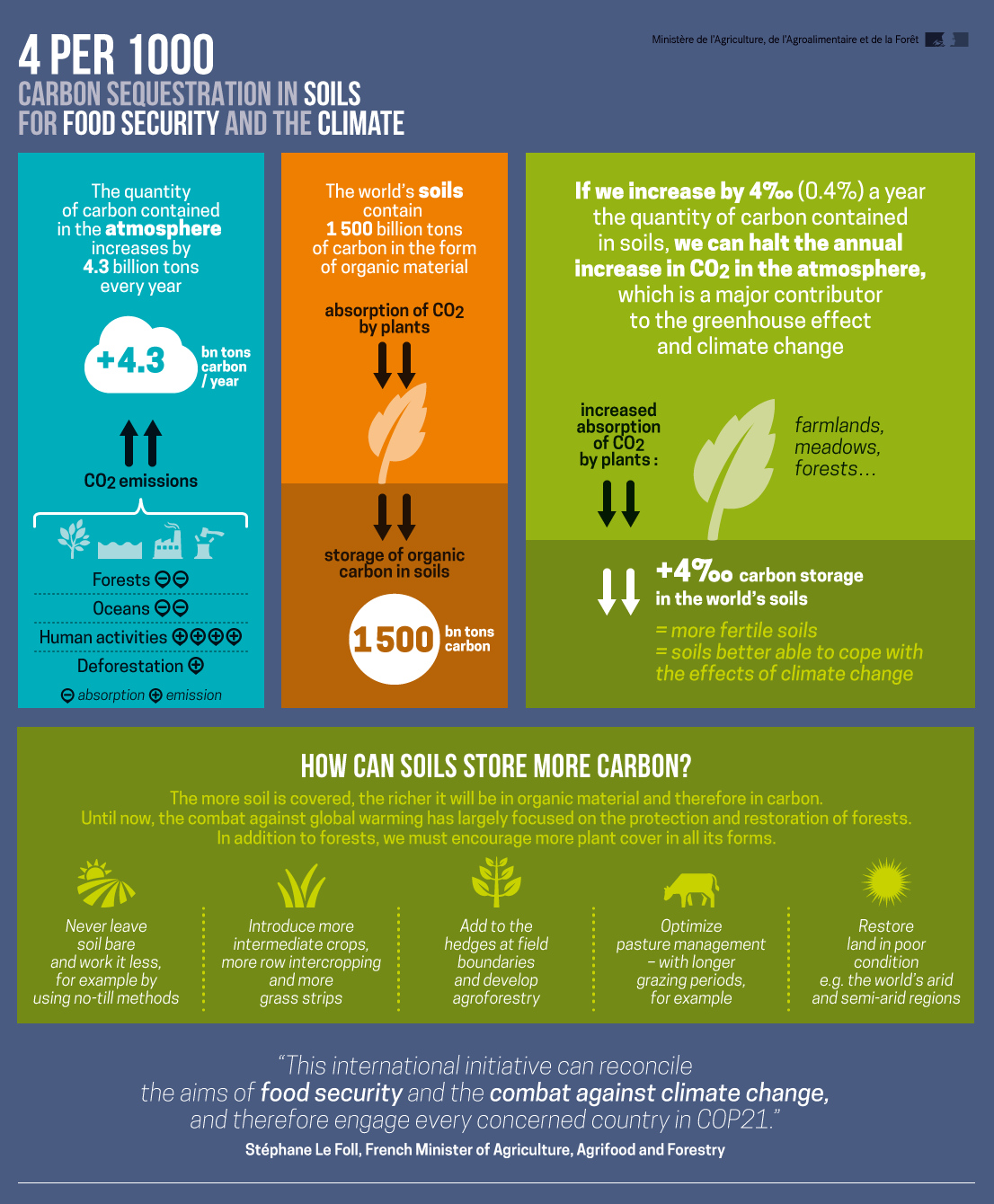The ‘4 per 1000’ initiative is an international initiative, launched in December 2015, that was founded to demonstrate how agriculture and agricultural soils play a crucial role in ensuring food security and managing climate change, and continues to do so today.
The ambition of the initiative is to encourage stakeholders to transition towards a productive, highly resilient agriculture, based on the appropriate management of lands and soils, creating jobs and incomes hence ensuring sustainable development.
Soils for food security & climate: ‘4 per 1000’ explained
Human activities emit large amounts of carbon dioxide (CO2) into the atmosphere, which enhances the greenhouse effect and accelerates climate change. Every year, 30% of this CO2 is absorbed by plants as part of the photosynthesis process. When those plants die and decompose, living organisms in the soil (bacteria, fungi, earthworms) transform them into organic matter. This carbon-rich organic material is essential for human nutrition because it retains water, nitrogen and phosphorous – all of which are essential for growing plants.
If this carbon level was increased by 0.4% per year, in the top 30-40 cm of soils, the annual increase in carbon dioxide (CO2) in the atmosphere would be stopped.
This is what the ‘4 per 1000’ initiative proposes; soils for food security and climate. The increase in the amount of carbon in soil contributes to:
- not only stabilise the climate
- but also to ensure food security, i.e. to provide food in sufficient quantity
‘4 per 1000’ further explained:
Is it achievable?
Agriculture can provide some practical solutions to the challenges of climate change, as is outlined by three key goals of the ‘4 per 1000’ initiative:
Number 1: Combat land degradation
Land degradation threatens more than 40% of the Earth’s land surfaces, and climate change is accelerating this process. This is concerning because land degradation has negative effects on food security and family farming.
Number 2: Participate in goal of food security
Our ability to feed 9.8 billion humans in 2050 will depend on our skills to keep soils alive. Agricultural production is directly correlated with soil health, the main indicator of which is the level of organic matter. Productive and stable soils directly support the resilience of agriculture to climate changes.
Number 3: Adapt to climate changes
Soils rich in organic matter and by consequence in carbon are better suited to withstand the impact of climate changes because they are more resistant t erosion and retain water a lot better, especially during extreme events such as droughts.
In addition, the initiative provides some great suggestions for creating and maintaining healthy soil:
- Nourish the soils with manure and compost
- Restore crops, pastures, degraded forests and the arid and semi-arid areas of our planet
- Plant trees and legumes (which also fix nitrogen from atmosphere in the soil)
- Collect water at the foot of plants
The initiative is summed up with this great infographic…

Head over to their website to find out more about 4 per 1000, and please share this initiative widely – protecting our environment is worth talking about.
You can also find out more about download our resource pack below to find out more about storing carbon and reducing climate change in our rivers and streams.
[cta id=’4608′]Banner Image: Commons.wikimedia.org. (2014). File:Australian Farm Scenery.jpg – Wikimedia Commons. [online] Available at: https://commons.wikimedia.org/wiki/File:Australian_Farm_Scenery.jpg
